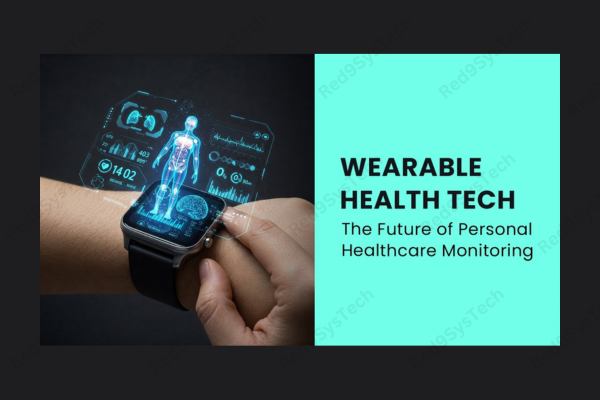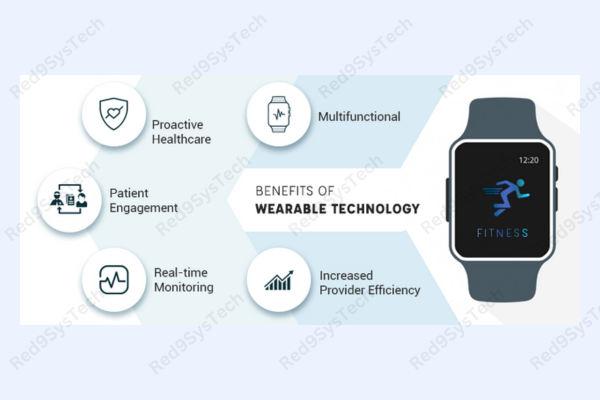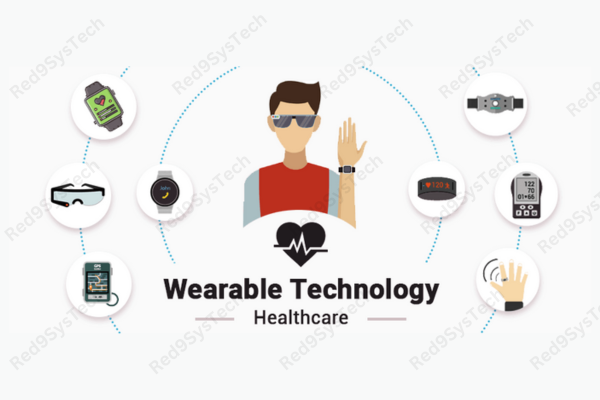Introduction: From Fitness Trackers to Lifesavers
Imagine your watch alerting you to an irregular heartbeat before you even feel a symptom, or your shoes detecting gait changes that could indicate a neurological issue. What once seemed like science fiction is now reality, thanks to intelligent wearables in healthcare.
These devices have evolved from simple fitness trackers to sophisticated health monitors, capable of detecting early signs of chronic conditions, aiding in disease management, and even preventing medical emergencies. The integration of artificial intelligence (AI) and advanced sensors has transformed wearables into powerful tools for both patients and healthcare providers.

Understanding Intelligent Wearables
Intelligent wearables are devices equipped with sensors and AI algorithms that monitor various health metrics in real-time. They collect data such as heart rate, blood oxygen levels, sleep patterns, and physical activity, providing insights that can lead to early detection of health issues.
Key Features:
Real-time Monitoring: Continuous tracking of vital signs.
Data Analysis: AI algorithms interpret data to identify patterns and anomalies.
Connectivity: Seamless integration with smartphones and healthcare systems.
User Engagement: Interactive interfaces that encourage proactive health management.
Real-World Applications and Benefits
a. Cardiac Health Monitoring
Smartwatches like the Apple Watch have been instrumental in detecting atrial fibrillation (AFib) and other heart irregularities. At the ECG Symposium in Nagpur, experts highlighted cases where smartwatches identified silent heart conditions, prompting timely medical intervention.
b. Diabetes Management
Continuous glucose monitors (CGMs) provide real-time blood sugar readings, allowing individuals with diabetes to manage their condition more effectively. Devices like the Dexcom G6 have revolutionized diabetes care by reducing the need for finger-prick tests.
c. Neurological Disorder Detection
Wearables can monitor movement patterns to detect early signs of neurological disorders such as Parkinson’s disease. For instance, smart insoles analyze gait and balance, providing data that can lead to early diagnosis and treatment.
d. Remote Patient Monitoring
During the COVID-19 pandemic, wearables played a crucial role in remote patient monitoring. Devices tracked symptoms and vital signs, reducing the need for hospital visits and enabling healthcare providers to manage patients remotely.
Read more Real-World Applications and Benefits

Challenges and Considerations
While intelligent wearables offer numerous benefits, they also present challenges that need to be addressed:
Data Privacy: Ensuring the security and confidentiality of health data is paramount.
Accuracy: Devices must provide reliable and accurate readings to be effective.
Accessibility: High costs may limit access for some populations.
Integration: Seamless integration with existing healthcare systems is essential for widespread adoption.
Future Outlook: The Next Frontier in Healthcare
The future of intelligent wearables is promising, with ongoing advancements aimed at enhancing their capabilities:
Advanced Biometrics: Development of sensors that can detect a broader range of health metrics.
AI Integration: Improved algorithms for more accurate data interpretation.
Personalized Medicine: Tailoring treatment plans based on individual health data collected by wearables.
Preventive Healthcare: Shift from reactive to proactive healthcare models, focusing on prevention and early intervention.
Read more Intelligence blog

Conclusion: Embracing the Wearable Revolution
Intelligent wearables are transforming healthcare by empowering individuals to take control of their health and enabling providers to deliver more personalized care. As technology continues to evolve, these devices will play an increasingly vital role in preventive medicine and chronic disease management.
For healthcare professionals, staying informed about wearable technology is essential to leverage its full potential. For individuals, embracing these tools can lead to better health outcomes and an improved quality of life.
Stay update in our Red9SysTech




